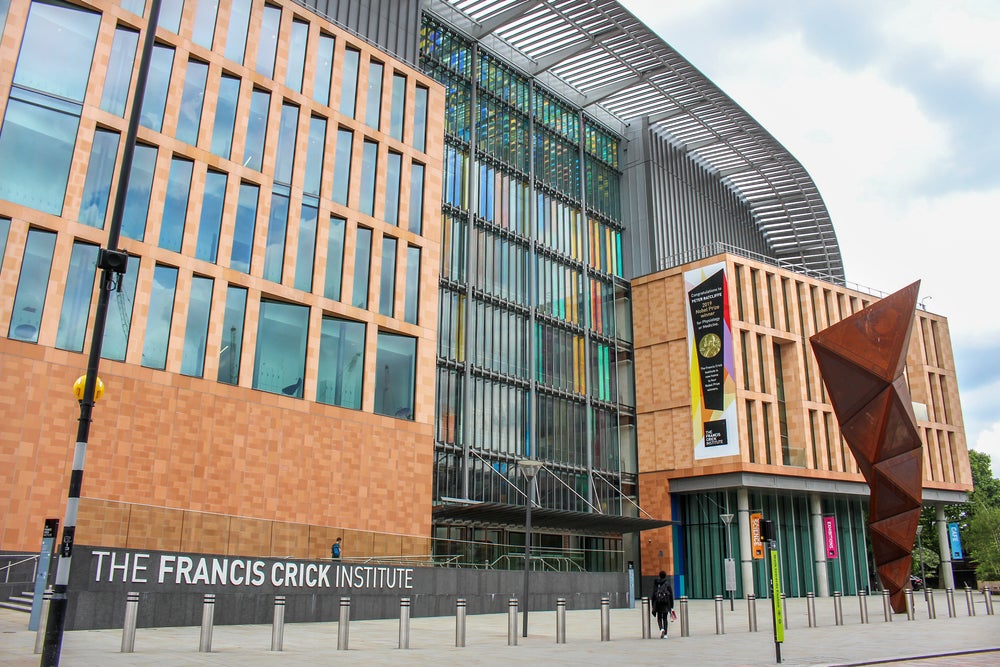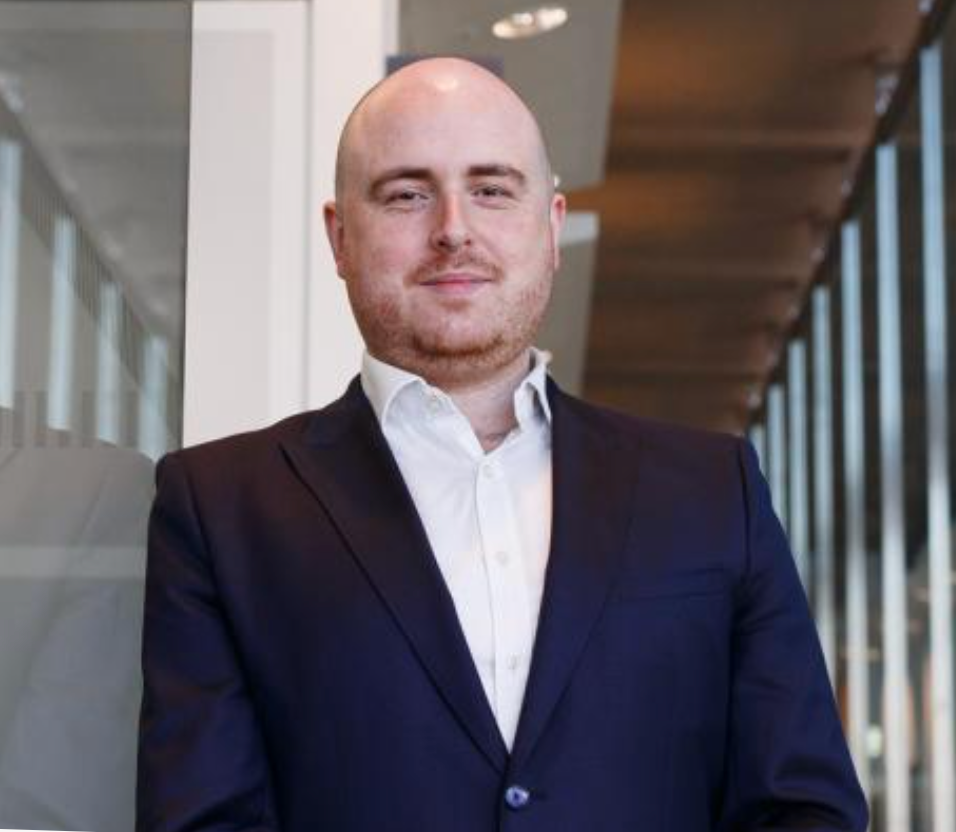
Every CIO will meet challenges throughout their career. The role is characterised by a requirement for problem-solving in an advancing technology landscape where systems integration and upgrades become more frequent, and such challenges continue to mount. But what if you had a clean slate?
James Fleming has been CIO at The Francis Crick Institute for six years. The institute is a brand-new scientific research organisation, founded in 2016, with a mission to explore biology at all levels, from molecules and cells to entire organisms, to help improve treatment, diagnosis and prevention of human disease.

Access deeper industry intelligence
Experience unmatched clarity with a single platform that combines unique data, AI, and human expertise.
Fleming has spent most of his career at UK telecoms giant BT, so is well versed in large and complex IT infrastructures. He concluded his time at BT as technical director for the UK’s fibre-to-the-premises broadband roll out, a monumentally big program, often quoted as being the UK’s second largest engineering project after HS2, the country’s high-speed rail network transformation project.
And after more than a decade working for the UK telecoms giant, the task of building IT infrastructure from the ground up, for a relatively small organisation like the Crick, could not have been more different. The institute’s rapid growth, as the organisation scaled from 1,000 to nearly 3,500 members in just four years, was a stark contrast to the slow pace of change at an old-line company such as BT.

Fleming joined the Crick Institute two years after its inception when it was still “in startup mode.” Despite its new remit, the organisation had to bring six existing organisations into the fold including Imperial College, The London Research Institute and the National Institute of Molecular Research. “So we weren’t starting with a completely blank sheet,” explains Fleming.
The organisation’s ambition was to become the UK’s flagship life sciences institute designed to compete globally. And it would achieve this by bringing together small pockets of outstanding research across the nation into a single critical mass of research. In addition, the Crick provides the economy of scale needed to invest in really cutting edge facilities.

US Tariffs are shifting - will you react or anticipate?
Don’t let policy changes catch you off guard. Stay proactive with real-time data and expert analysis.
By GlobalDataA globally recognised flagship institution for UK life sciences
The first phase of rapidly scaling up the institute was to bring everyone from each organisation to work together with common communication and enterprise resource planning systems. Even at this stage, Fleming and his team had to “develop new systems and processes almost on the fly.” And just as they were “getting a grip” on the enterprise data, the Covid-19 pandemic hit. “We actually did our ERP [enterprise resource planning] crossover during Covid. I would never recommend doing that,” he quips.
The organisation was quickly repurposed to become a Covid-19 test pipeline during the pandemic, processing some 250,000 tests in total. Having an instrumental role in mobilising the effort for Covid-19 testing was unforeseen. However, as happened across the whole nation at the time, a team effort brought extraordinary results. And the UK’s life sciences expertise was leveraged and tested in an extreme situation.
“We were doing about 20,000 tests a week at peak, and that was for all of the acute trusts and patients in London,” says Fleming who describes it as a “full on” couple of years during which the institute helped to keep the healthcare system open. “That was phenomenal, really. It brought the institute together, and had a huge IT component.”
Snowflake platform connects Crick’s disparate data
The Crick has around 120 individual labs, all of which leverage relationships built with the NHS in London during the Covid-19 pandemic. To understand the basis of human disease, working with patients becomes essential and the requirement for data privacy when it comes to patient records is part of this equation. That is what led Fleming to choose the Snowflake data platform to house all research data, and build a system call Trellis that is currently being implemented.
The Crick had atypical requirements for a data platform. Usually, an organisation would have a big data set, like electronic health record system, which requires a data vault that can be interrogated across that organisation. “We were almost the opposite,” says Fleming. What the organisation had was no data to begin with but, as an example, five different hospital trusts with data on a lung cancer study.
“Instead of spending millions of pounds and a couple of years implementing a system we used Snowflake which changed the paradigm,” says Fleming who needed to create a data interchange ecosystem between healthcare, research, performing organisations, patients and the public, and create trust between all them as well.
Snowflake underpins all of this making a very complex problem quite straightforward with the ability to share data between accounts, without physically moving the data, and with in-built data access controls. Fleming describes Snowflake’s share-based model as an “elegant” solution to the Crick’s complicated data access needs. Every NHS Trust has its own information governance restrictions. So, for example, a study across London would mean working with 35 different trusts individually with a different agreement and a different set of lawyers reviewing it to get access to it.
Data hygiene provides enterprise efficiency
The productivity gain of getting this interchange right, is phenomenal, according to Fleming. “Never mind the scale of data you can potentially operate at as well,” he adds. “As far as I can tell, we’ve been talking about interoperability in healthcare for about 30 years and here we are in 2024 and it still hasn’t been cracked. It’s a complex one.”
On the Crick becoming an NHS test case for data storage and management to be replicated elsewhere, Fleming says: “Absolutely, there’s no reason it couldn’t scale. But ask me in a couple of years’ time when we’ve fully implemented.”
The data plan is still at the conceptual design stage for the broader framework. By the end of the next fiscal year, Fleming’s team will be able to start demonstrating it. Though working in academia means there is no commercial business case and funding so, while Fleming would like to show some value in that time frame, there are no assurances.
Corralling so many different organisations into agreeing to work together is a much harder challenge than just managing the data involved. “You’ve got to get all the different parties to play together for the benefit of the overall research and be sensitive to the fact a lot of organisations have sunk considerable time, effort and money into their way of working, their infrastructure, their trusted research environment,” says Fleming.
Finding ways to interoperate within an existing “brownfield” environment while being effectively consistent and maintaining an overall sense of collaboration. “It’s a very difficult balance,” admits Fleming.
There many different ways to achieve a positive outcome. Wearing his problem-solving hat, Fleming must demonstrate which method is actually working and subsequently get it over the line. “That is the greatest challenge. Otherwise, we’ll be here in 2035 still talking about the potential of NHS healthcare data and will still be no further forward,” concludes Fleming who’s determination to make it happen is a promising start.







